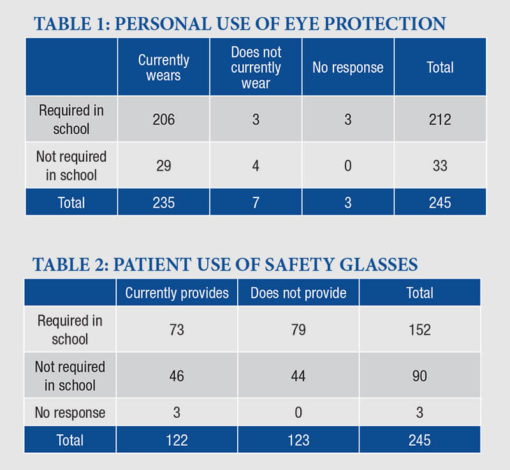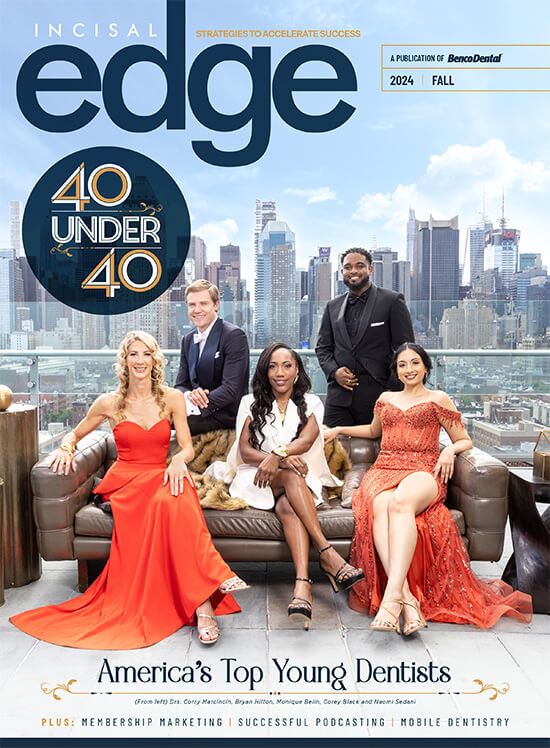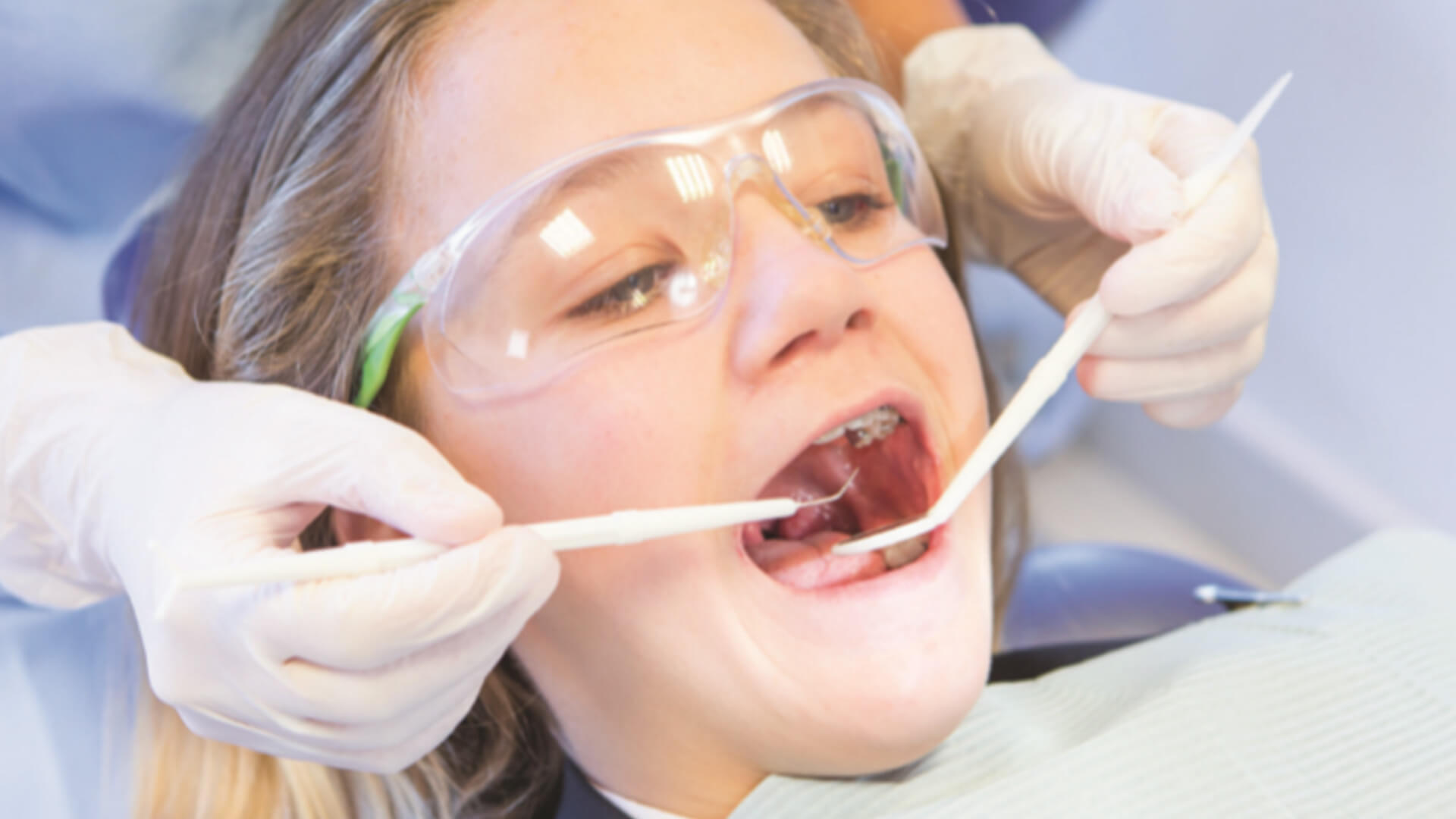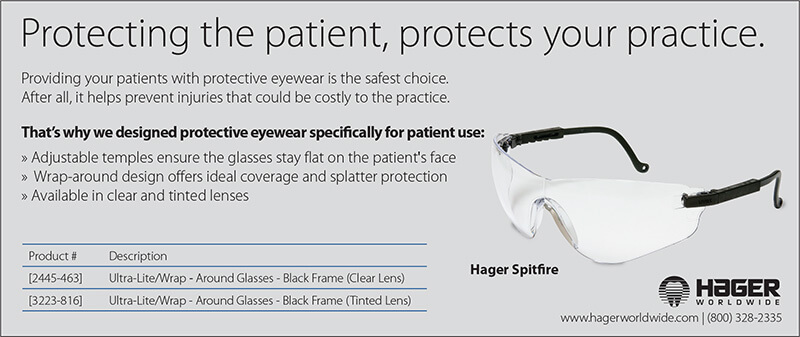Are dental professionals using safety glasses while rendering care?
BY KANDYCE M. A’SEE, RDH, MS, AND M. SUZANNE MATHIS, RDH, MS
Compared to medicine, dentistry has been slow to consider how patient safety practices can be improved for several reasons. First, the risks of mortality and significant morbidity associated with the practice of medicine are far greater than they are with dentistry.1 In addition, the frequency and severity of adverse events in hospitals have led to campaigns by health authorities, making medical health professionals more aware of certain patient safety needs than dental professionals.
In contrast, dental care is much less structured than hospital care, and most dentists practice in isolation. Many dental professionals are unaware of the safety culture. Nevertheless, incidents can occur in dentistry and can lead to serious consequences.
According to one study, almost 6% of iatrogenic injuries in dentistry involve patients’ eyes.3 Data from the National Reporting and Learning System (NRLS), a voluntary national reporting system set up in 2003 in England and Wales, was analyzed for all incidents of iatrogenic harm in dentistry from January 2009 to December 2009. This data showed that out of 210 incidents of iatrogenic harm to dental patients, 12 injuries involved the eyes.
Eye protection is part of multiple guidelines on infection control and safety in dental practices. In the “Guidelines for Infection Control in Dental Health-Care Settings 2003,” the Centers for Disease Control and Prevention (CDC) requires protective eyewear for both practitioner and patient: “Protective eyewear with solid side shields or a face shield should be worn by dental health-care personnel during procedures and patient care activities likely to generate splashes or sprays of blood or body fluids. Protective eyewear for patients shields their eyes from spatter or debris generated during dental procedures”.

These guidelines are clear, but not all dental professionals are compliant. In a study published in 2006, Farrier and Gilmour conducted a survey of 200 general dental practitioners at random. The dentists reported their personal use of safety glasses and the use of safety glasses by their patients. Out of the 138 questionnaires returned, 94% of the dentists indicated that they understood the need for protective glasses but only 87% actually wore them.5 Of the 87%, 58% wore their personal glasses, and only 21% of those had proper side protection.
Only 67% reported compliance with providing safety glasses for adult patients, and 60% reported they would continue to provide dental treatment even if a patient declined to wear any eye protection.5 While dental professionals are aware of the potential risks of not wearing eye protection or not providing eye protection for their patients, and while they are concerned about the possibilities of infections and injuries, the data shows that many still do not wear or provide optimal eye protection.
When dental professionals are noncompliant, eye injuries are more likely to occur. The risks include viral and bacterial contamination of the eye via bodily fluid, as well as trauma.
Of the 212 dental professionals who were required to wear safety glasses during professional school, 206 (97%) reported that they currently wear protective eyewear, such as loupes, prescription lenses, or a face shield for various procedures. Three did not respond to indicate whether they currently wear eye protection, and the remaining three indicated that they do not wear any type of eye protection.
Of the 33 who were not required to wear protective eyewear in professional school, four responded that they do not currently wear any type of eye protection, and 29 (88%) indicated that they do. The results of this survey imply that being required to wear eye protection in professional school does not determine if a dental professional will wear it in practice.
152 reported they were required to provide safety glasses for their patients while attending professional school, but only 73 respondents (48%) are doing so in practice.





